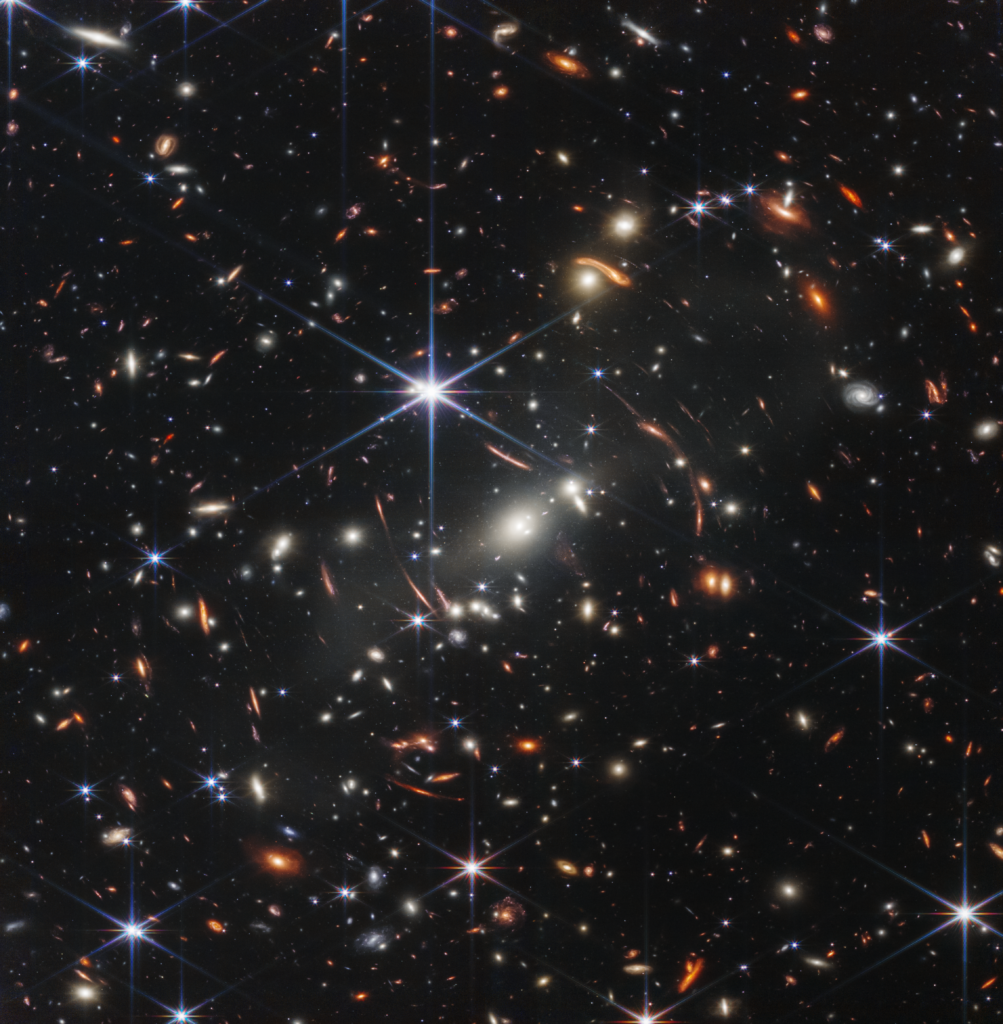
NASA has provided a sneak-peak at stunning, stellar sights: the very first image produced by the James Webb Space Telescope has been released. The space telescope has produced the deepest and sharpest infrared image of the distant universe to date. Known as Webb’s First Deep Field, this image of galaxy cluster SMACS 0723 is overflowing with detail. Thousands of galaxies, including the faintest objects ever observed in the infrared, have appeared in Webb’s view for the first time. This slice of the vast universe covers a patch of sky approximately the size of a grain of sand held at arm’s length by someone on the ground.
The image, a 28.5MB PNG file with a resolution of 4,537 x 4,630, is expected to be the first of a long list of shocking sights and firsts to be captured by this latest space-based tech.
The deep field view, taken by Webb’s Near-Infrared Camera (NIRCam), is a composite made from images at different wavelengths, totaling 12.5 hours – achieving depths at infrared wavelengths beyond the Hubble Space Telescope’s deepest fields, which took weeks.
The image shows the galaxy cluster SMACS 0723 as it appeared 4.6 billion years ago. The combined mass of this galaxy cluster acts as a gravitational lens, magnifying much more distant galaxies behind it. Webb’s NIRCam has brought those distant galaxies into sharp focus – they have tiny, faint structures that have never been seen before, including star clusters and diffuse features. Researchers will soon begin to learn more about the galaxies’ masses, ages, histories, and compositions, as Webb seeks the earliest galaxies in the universe.
NASA plans to release the full suite of imagery captured by the instrument tomorrow. NASA TV will be broadcasting the unveiling live starting at 10:30am ET on Tuesday, July 12.